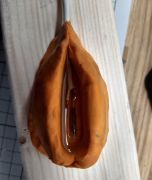|
SourKraut posted:But yes, if you are going to handwave away every and all study and argument, be prepared to defend it and don't be a smug "I know everything' poster. Not everything is worth refuting. Especially when you see it being used incorrectly to pursue an agenda. Like these studies that have been floating around on this topic. But you still seem to be missing the relevance here, which is that you need a good hood regardless of fuel source. Since you didn't address that I assume you just want to argue over something that I truly do not give a poo poo about and has nothing to do with the outcome of my very good recommendation on this matter. Perhaps you should take it to D&D.
|
|
|
|

|
| # ? May 28, 2024 11:08 |
|
Motronic posted:Perhaps you should take it to D&D. Easy there. You are the one who dismissed it as well. Feel free to start a thread in D&D. Good range hoods are a great improvement to the home. They reduce smells, cooking byproducts, and exhaust byproducts of combustion which are indisputably not good for you. The degree to which they are is open to interpretation. I would kill for a proper range hood.
|
|
|
|
H110Hawk posted:Easy there. You are the one who dismissed it as well. Feel free to start a thread in D&D. My house luckily has a range hood which vents outside, but itís as old as the house (35 years). The PO never cleaned it so I replaced the filter and then went to work on cleaning up all the grease around the fan and the hood itself. It was disgusting. Whatís a good vent hood to buy now? Iíd need a standard 20Ē one and thereís a cabinet above the hood so I canít have one of those industrial looking ones with the huge stack on top.
|
|
|
|
SourKraut posted:Yes, if you're going to be making the claim that ALL of the studies are "bullshit", then absolutely, explain why the methodologies are terrible and are being used as scare tactics. If you're pro-gas, that's fine, but you also have the knowledge and capability to mitigate the indoor air quality concerns. A lot of people don't. Burying the lede about your ASTM and ASCE creds, that sounds cool, any standard setting stories relevant to the thread to share?
|
|
|
|
nwin posted:My house luckily has a range hood which vents outside, but itís as old as the house (35 years). The PO never cleaned it so I replaced the filter and then went to work on cleaning up all the grease around the fan and the hood itself. It was disgusting. I have a Hauslane that I installed a few months ago. It is quiet, moves a ton of air when you want it to, has a bunch of different vent options, and didn't cost an arm and a leg. Completely satisfied customer. e: Manufacturer page: https://hauslane.com/
|
|
|
|
I just turned on my furnace today and I feel like there's a vibration that's associated with the combustion air blower instead of the main blower. You can basically feel it through the floor through your feet when it first kicks in and starts heating up, and then noticeably it stops ~20 seconds before the main blower does when it cycles off, so it must be related to the actual combustion system. I didn't notice anything with the AC running a few weeks ago either. But it seems weird, the combustion fan is much smaller than the main blower, and there's no sound like a bad bearing or anything. It's as if it went out of balance on its own somehow? How the hell would that happen? The only other thing I can think is they replaced my gas meter a few weeks ago, and the water heater has been fine, but could there be... I don't know, trapped oxygen doing something weird in the line causing a pulsating effect? Probably a ridiculous idea.
|
|
|
|
Rescue Toaster posted:I just turned on my furnace today and I feel like there's a vibration that's associated with the combustion air blower instead of the main blower. You can basically feel it through the floor through your feet when it first kicks in and starts heating up, and then noticeably it stops ~20 seconds before the main blower does when it cycles off, so it must be related to the actual combustion system. I didn't notice anything with the AC running a few weeks ago either. There could have been air in the gas line making the first startup after the meter was replaced take longer then usual, but that would be a one time thing.
|
|
|
|
is it the combustion motor, or the actual burners making the sound. incomplete combustion or heat exchange holes can cause weird sounds.
|
|
|
|
MRC48B posted:is it the combustion motor, or the actual burners making the sound. I don't really know. It sounds/feels just like a rumble or vibration, almost like a fridge compressor running kind of sound, and you can feel the vibration touching it or standing on the floor above it. More than anything it just sort of sounds unnaturally loud considering the main blower is fairly quiet. We have CO detectors on all 3 floors of the house and haven't noticed any unusual smell or anything so I don't think I'm getting combustion gas into the actual air system which I'm assuming means the heat exchanger doesn't have holes. I'll double check the exhaust vent outside when it's running but I think if the exhaust was blocked in some way it would shut off, no?
|
|
|
|
The only way to really be sure is to get down there when it's running. If it's the inducer fan it should be obvious-ish. If it's wierd gas pressure/flow rate stuff you're going to want a pro to look at it. Did it literally start immediately after replacing your gas meter? Could crud have gotten into your burners?
|
|
|
|
Well the gas meter was replaced about a month ago, and this is the first time I've run the heat this fall. So I'm trying to remember how loud it was last spring and who knows. Hopefully I can tell if the vibration starts before ignition though I don't think the inducer runs for very long before ignition.
|
|
|
|
the usual sequence is: thermostat calls for heat, combustion fan starts, (whirring noise from motor) safeties prove (soft click(s)) igniter starts to glow orange/ spark (orange glow or a rapid clicking sound if its spark) gas valve opens* (with a faint woosh), flame is proven. main fan starts x seconds later. if your noise is after gas valve opens, it definitely needs further investigation * there may be a pilot light intermediate step here, but modern units have usually gotten rid of this step
|
|
|
|
It 100% is the combustion/inducer fan. The vibration starts as it reaches top speed, there's some kind of resonance. The poor little pressure diaphragm (that detects inlet/outlet pressure difference I think) is attached to the inducer and getting shaken like crazy. Not violently but to the eye it's blurry. Which can't be good for it long term. There's no sound from the bearings at all, and visually the motor itself doesn't appear to be vibrating much. What I've seen online indicates sometimes tweaking the tension on the soft/rubber mounts the inducer is on might help with vibration, but the way the mounts work don't look like that's possible. Otherwise I'm not sure how practical it would be to take the cover of the inducer fan off, there's a few things in the way. The inducer fan looks like a normal 120v AC fan according to the label, except it has 4 wires + ground instead of 2 + ground, so that's a little odd. I was hoping I could easily run the inducer by itself with the rest of the furnace powered off.
|
|
|
|
They're pretty cheap parts and yours is failing. I would just replace it. Two of those are probably power and the other two a sensor. I wouldn't bother bench testing if it's obvious that's the issue, at least not without a replacement in hand.
|
|
|
|
If the bearings spin fine at low speed my internet diagnosis is that the combustion fan wheel has become unbalanced, either through rust or damage. Usually the wheel + motor is sold as a complete assembly, so if you are willing to try this repair, order a replacement. Otherwise call a professional.
|
|
|
|
MRC48B posted:If the bearings spin fine at low speed my internet diagnosis is that the combustion fan wheel has become unbalanced, either through rust or damage. If they have outside intake air it could very easily be debris as well. I've pull a lot of leaves/nuts/etc out of draft fans. No replacement necessary, just get the poo poo out of it.
|
|
|
|
I can see now obviously the extra wiring is just for the run capacitor. It's this unit, https://www.amazon.com/JE1D013N-Carrier-Furnace-Inducer-Replacement/dp/B00EZWSAQ0 JE1D013N, so $320. There's a part that looks nearly identical sold as 320725-756, which runs more like $220. I'll have to try to verify which one exactly I can/should use, for a Bryant 90 Plus. EDIT: Notably, I think it has leaked condensation in the past, which they 'fixed' to whatever degree, so obviously they opened this small housing in the past and re-sealed it at least once. So must be possible to pop it open and check for crap and re-seal it. I can't tell if it's closed w/ a gasket or looks like just a bead of silicone squeezing out around all the edges. I'd be comfortable replacing the whole thing too, most of it is straightforward there's just the PVC pipe and the drain line, the only part I'm unsure about is how it seals at the back. Rescue Toaster fucked around with this message at 02:45 on Oct 10, 2022 |
|
|
|
pmchem posted:Burying the lede about your ASTM and ASCE creds, that sounds cool, any standard setting stories relevant to the thread to share? I haven't forgotten about this, but relevant to this specific thread? Probably not, since I have mostly been involved with standard review and revision related to fairly specific standards governing alloy classifications for structural steels and in particular how it relates to certain exposures (mostly potable water, some oil), and relatedly specific areas of the seismic design analysis for welded and riveted steel tanks (principally sloshing, but also stress on the structural members for different tank design categories). I guess one "fun" tidbit of this, in a way related to HVAC, is in how the design standard approaches tank ventilation. The applicable standards that relate to steel tank design (whether ASME, ASCE, AWWA, etc.), often refer to the need to size the tanks for the uplift conditions under normal filling operations and the applicable air exhaust rate for it. In addition, you need to size the vents for suitable intake under a rapid loss of volume scenario. For the water/wastewater industry, this is often done via gooseneck vents and/or gravity ventilators that are covered. For steel potable water tanks, these often take the form of "mushroom" or rectangular hooded vents with #16 mesh covering the vents with ideally about an effective 70% open area, and enough vents with the mesh restriction to satisfy the necessary intake venting condition that is required to avoid tank collapse (for reference, it can take very little differential pressure to collapse a steel tank under a rapid discharge scenario). The #16 mesh is a standard EPA-required guideline to avoid pest intrusion into the potable water supply, but as a fun fact, the EPA now recommends (but does not require...) #24 mesh. The issue is that a lot of municipalities, companies, etc., do a poor job of preventative maintenance on the vents that allow them to remain in proper venting condition, i.e. detritus, insects, etc., that accumulate on the mesh. So why is all of this relevant? Because numerous standards require the use of an "emergency" venting mechanism that, in the event of obstruction (whether due to the above references, or ice accumulation in cold weather climates, corrosion, etc.), you want something in place that'll act as a final failsafe in the event the tank goes under a vacuum condition but its normal vents are blocked. These vents take the form of basically giant steel or stainless steel cylinders, that are designed so that 95% of the time, they act as normal vents, but they have additional hinged plates, sometimes spring loaded, that will open up under a greater differential pressure to provide that failsafe and prevent tank collapse. The issue? These are fairly unique vents, a few companies I believe have the patents effectively on the design, and only a few companies manufacture them. They have to be sized specifically for the tank they're being installed on, usually, and so most of the applicable ASME/ASTM capable fabrication shops, don't make them and have to procure them separately. So... a few of the applicable steel tank standards generically describes what they are supposed to do, but without actively calling them out specifically. It's basically being left to the consulting engineer to specify them directly, but unfortunately a lot of consulting engineers are really bad and so don't pick up on it. So every time I'm helping on these, I try to push for it to carry strong language, and every time, it's an uphill battle between manufacturers who don't want to have to be forced to procure them separately, and those who point out to the infrequency of complete tank failure as a reason to not be more stringent. (And in all honestly, you rarely see complete tank failure; instead, it usually manifests as small deformations in the steel plating and/or separation at areas with weak welds or poor riveting, because the events that put stress on the tanks are usually not great enough to facilitate a complete collapse). So a lot of times people think the tanks are leaking because of poor original fabrication, when in reality, the weld or riveting might have been "acceptable" to standard, but simply had a higher concentration of impurity in the solder or plating that allowed the plate to deform at a rivet, and perform applicable repairs, when it's treating the symptom and not the problem. And more often than not, a steel tank might have anywhere from 2 to 6 or 8 vents, and they only need one or two of these specialized vents at most and the rest can be standard gravity ventilators. And that's just one subsection of a standard! lol. Don't get me started on seismic sloshing and the inadequacy of most consultants and manufacturers...
|
|
|
|
That doesn't sound very relevant to noxious and/or hazardous gasses that may or may not be created in the process of cooking foods. How are you involved in that subject professionally?
|
|
|
|
kastein posted:That doesn't sound very relevant to noxious and/or hazardous gasses that may or may not be created in the process of cooking foods. It seems pretty interesting in general. Let's be chill here, it's an interesting story that is tangentially relevant to the thread and we don't need to pedantically complain it wasn't somehow related to how their certs came up.
|
|
|
|
I should have just PM'd pmchem with it, sorry.
|
|
|
|
SourKraut posted:I should have just PM'd pmchem with it, sorry. You were right to  please keep at it. please keep at it.
|
|
|
|
Well I thought it was interesting as hell. I've seen the video of a railway car collapsing from a blocked vent and it's terrifying. Also good to know #24 mesh is "the good stuff" for pest exclusion.
|
|
|
|
SourKraut posted:I should have just PM'd pmchem with it, sorry. All good man, Iím sure there are other engineer/trades people reading who probably got more outta that than me! But I liked the story.
|
|
|
|
Well I got a new inducer fan assembly for my furnace and this one doesn't seem especially well balanced either. Holding it up on edge (the orientation it'd be mounted in) on a workbench I can hear/feel the bench vibrate slightly from the fan running on top. I'd really hate to get through the whole installation and find out it's not much better... The old one vibrates enough to give the whole furnace an audible rattle, the inducer is louder than the main blower, and the pressure valve that's mounted to the inducer vibrates enough it's hard to read the lettering on it while it's running. So I'm guessing the new one would at least be better than that, but I don't know if I should try to swap the new one or not, if it should be perfectly smooth or not when first out of the box?
|
|
|
|
Does anyone have experience with hybrid (air-to-water and air-to-air) heat pumps? My house is pushing 120 years old and has a 100k BTU, 85% efficient boiler that's nearly 40 years old. The thought of putting good money into a new gas unit kills me. If I'm spending on a heat pump, why not get A/C too, right? But the house has no ducts, and heats with cast iron rads that are now crazy oversized since the house has had major insulation upgrades over the years. I keep the valves throttled down on most of them. I estimated the current radiators at something like 45k BTU/hr at 180 degrees which is what the boiler runs on now, or 30k BTU at 140 degrees. Is it crazy to think about an air-to-water heat pump with the existing rads (plus a few in currently unheated areas)? And is mixing air-to-water with an air-air a terrible idea? Previous owner cooled the place fine with 2 window units, and I think one head unit upstairs and one down would do the job just fine. (Lake Superior area, where days above 70F are pretty rare). A blower door test is on my agenda to get some more solid numbers, but my coldest-month 30-day average use was 17k BTU/hr. Seems like a heat pump should do it, maybe with supplemental wood heat on the coldest days (which are -5F, nothing like Minnesota or North Dakota cold)? Also, is it a really stupid idea to crank the boiler down to 140 to test or will I crack the manifold with cold return water?
|
|
|
|
Hi thread. My existing Heil furnace is 10 years old and weíre at the point where cost of the ongoing repairs means it likely makes the most sense to get a new unit. We've sunk $600 into repairs already and currently have nothing to show for it except a fried panel and no heat. I'm a relatively new homeowner and know next to nothing about HVAC so would appreciate any help. We live in Connecticut, our house is 4500 sq ft in total split into 3 zones. The upper level + main level are 3,000 sq ft and then this past spring we finished our 1500 sq ft walkout basement into an in-law suite. Our current furnace is 100k BTU but since we just recently finished the basement, we havenít yet had to heat all 3 zones. The HVAC guys our GC used to install the third zone said our existing 100k BTU furnace size was fine but Iím questioning that as I look at various calculators for our climate. It's unlikely we'd need to heat all 3 zones at once, if that matters. Quote 1: ďReplace the existing furnace with a new Ruud R95TC100 95% efficient LP gas fired furnace. Install Scope- Reuse PVC intake and exhaust vent pipe, make all sheet metal, wiring connections, install condensate pump with neutralizer. We will replace the zone control panel with a new Honeywell TrueZone panel. Permits not included, acquired by company and billed separately. 10 Year Conditional Parts Warranty with Registration, Limited Lifetime Heat Exchanger Warranty. $7150 Quote 2: ďRemove and replace furnace. Install Trane S9B1C1000U5 Propane furnace. Replace 3 zone EWC zone panel. Reconnect to existing ductwork, electrical and propane piping. Guarantee: We guarantee all supplied equipment, material and labor for a period of one year from date of start-up. Trane furnace has a 10 year factory warranty on parts, 20 years on heat exchanger.Ē $5150 These are the two quotes so far, a third company ghosted us tonight. Is quote #2 the clear winner here? Is 100k BTU actually sufficient for our square footage? Thanks in advance.
|
|
|
|
Air to water heat pumps exist, but their performance is kinda crap. The carrier units i'm seeing have max water temps of 140. plus you're paying money for a unit and you're only using half of it, because you can't use your heating radiators for cooling* If you truly rarely get OA above 70, a mini split system with supplemental wood burning hot water would seem ideal. modern wood burners can be super efficient, and if you're rural enough fueling them is easy and relatively inexpensive. High end minis can work down to -15 these days, so you may find you never need to fire up the boiler until it hits zero. *ok technically you could by running the water temps above the dew point but still a bad idea
|
|
|
|
amethystbliss posted:Hi thread. My existing Heil furnace is 10 years old and weíre at the point where cost of the ongoing repairs means it likely makes the most sense to get a new unit. We've sunk $600 into repairs already and currently have nothing to show for it except a fried panel and no heat. I'm a relatively new homeowner and know next to nothing about HVAC so would appreciate any help. We live in Connecticut, our house is 4500 sq ft in total split into 3 zones. The upper level + main level are 3,000 sq ft and then this past spring we finished our 1500 sq ft walkout basement into an in-law suite. Our current furnace is 100k BTU but since we just recently finished the basement, we havenít yet had to heat all 3 zones. The HVAC guys our GC used to install the third zone said our existing 100k BTU furnace size was fine but Iím questioning that as I look at various calculators for our climate. It's unlikely we'd need to heat all 3 zones at once, if that matters. the basement was already considered when they sized the unit when the house was built. finished/unfinished doesn't matter. the only way to know if 100k is sufficient is if someone does a "Manual J" calculation on your home. this takes into account windows, insulation, wall area, and where you live (how cold it actually gets). if you're nervous about it ask the contractors if they offer this service or know someone who does. 90% of hvac businesses just replace like with like (or maybe a little larger) and assume whomever built the place did the math right. quote:These are the two quotes so far, a third company ghosted us tonight. Is quote #2 the clear winner here? Is 100k BTU actually sufficient for our square footage? Thanks in advance. the #2 cost is lower because you're getting less. the ruud claims slightly more efficiency and a variable speed blower.
|
|
|
|
jailbait#3 posted:Does anyone have experience with hybrid (air-to-water and air-to-air) heat pumps? My house is pushing 120 years old and has a 100k BTU, 85% efficient boiler that's nearly 40 years old. The thought of putting good money into a new gas unit kills me. If I'm spending on a heat pump, why not get A/C too, right? But the house has no ducts, and heats with cast iron rads that are now crazy oversized since the house has had major insulation upgrades over the years. I keep the valves throttled down on most of them. Together with my brother I've retrofitted an old house that used to be straight resistive with an air-to-water heat pump, so I guess I know some, at least about the air-to-water side of things. It's a 13kW thermal output unit that feeds two isolated tanks, one for heating water and one for tap water. It's a relatively old unit that we bought as a complete installation package for a ridiculously low price used with almost no hours on the compressor. It has no RPM control on the compressor like modern ones do, so both storage tanks are necessary to limit the start frequency. It's been working flawlessly for more than a few years now. MRC48B posted:their performance is kinda crap. Convectors are useful too and have huge effective areas in a relatively small volume. They can be ceiling mounted and can also be used for cooling (at least commercially this is pretty common where I live) though I have no real experience with this.
|
|
|
|
MRC48B posted:the basement was already considered when they sized the unit when the house was built. finished/unfinished doesn't matter. Thanks so much for this. I got a third quote for a Trane 59V2 Variable Speed Propane furnace for $6595. Any thoughts on the Trane vs the Ruud Ruud R95T quote for $7150?
|
|
|
|
none whatsoever. look at each installing contractors review history, and how well they support their customers. brands don't matter in this industry. people do.
|
|
|
|
Can I get a sanity check on a theoretical change to my mechanicals? I have a furnace that pulls from 70-year-old in-slab returns through a coil and then into the supply ductwork. As part of other work on the house, I'd like to take the opportunity to move the furnace which is horizontal-capable, and the coil, which is only upflow/downflow (but I don't want to spend $800 additional to replace it), into the attic and abandon the existing return system. Assuming enough headroom for the radius of the flat elbow, is this a setup that would work? I need a bend at some point to go from horizontal, and I'm wondering if there's a reason it can't be before the coil rather than after it (where I assume it would be if the coil was horizontal flow).
|
|
|
|
Are you installing a grille to pull return air into the attic? You need to hard duct that return into a ceiling grille, I didnít see that mentioned so I wanted to be sure you took that into account. By coil, I assume you mean refrigerant coil for cooling? If so, then youíll need to rerun the refrigerant lines and the condensate drain. If itís not refrigerant, what is the coil for? Otherwise, I think itíll work.
|
|
|
|
Bird in a Blender posted:Are you installing a grille to pull return air into the attic? You need to hard duct that return into a ceiling grille, I didnít see that mentioned so I wanted to be sure you took that into account. In the tradition of only posting half a project, I have left probably critical detail out. The prerequisite for this project would be foam-insulating the attic, so my hope would be that I could just use the whole attic space as a return plenum with a grille or two but not any additional return ductwork. Coil is indeed for refrigeration, it's a heat pump, I understand the lines will need to be rerun, the quote for that wasn't awful.
|
|
|
|
Hoping you all can help just answer a quick question about my furnace, google wasn't providing a helpful answers. I have a forced air, gas furnace that was installed about 20 years ago. It's in a closet, ducted through the crawlspace to each room, the return and filter is in the hallway on the other side of said closet. There is a floor vent grate in the same closet as the furnace that is open directly into the crawlspace, no damper or filter just a hole strait to my filthy, spider filled, open vented crawlspace. Any thoughts on why that was installed? I can smell the crawlspace inside the house and feel cold air rushing in so I would like to close it off but has to serve a purpose right? Thanks. edit: I just bought the house so I know nothing of the HVAC history.
|
|
|
|
Qwijib0 posted:In the tradition of only posting half a project, I have left probably critical detail out. I would assume foam insulation is not plenum rated, which means you can't use the attic as a plenum without lining the foam. Even if you decide to do that, does this mean you're covering any vents in your attic? The return air will pull air from any opening, so your attic would need to be sealed up. I'd have to look up smoke rating of whatever your using to be sure, but the danger is that if there is a fire in your attic, you will then pull all that smoke and fumes and blow it through your whole house, which is a very bad thing to happen.
|
|
|
|
raggedphoto posted:Hoping you all can help just answer a quick question about my furnace, google wasn't providing a helpful answers. I have a forced air, gas furnace that was installed about 20 years ago. It's in a closet, ducted through the crawlspace to each room, the return and filter is in the hallway on the other side of said closet. Super lovely way of doing makeup air I would guess. You furnace probably has provisions to use PVC pipe for that but running it properly would be like effort or something.
|
|
|
|
Motronic posted:Super lovely way of doing makeup air I would guess. You furnace probably has provisions to use PVC pipe for that but running it properly would be like effort or something. That was my best guess, Edit: reading up on it, this answered my question though thanks! Must be for a fresh air intake since the furnace is in such a tight space, now I just need to figure a way to pipe in the air from outside instead of the crawlspace. raggedphoto fucked around with this message at 22:29 on Oct 25, 2022 |
|
|
|

|
| # ? May 28, 2024 11:08 |
|
raggedphoto posted:Hoping you all can help just answer a quick question about my furnace, google wasn't providing a helpful answers. I have a forced air, gas furnace that was installed about 20 years ago. It's in a closet, ducted through the crawlspace to each room, the return and filter is in the hallway on the other side of said closet. How old is your house? My first thought is it's a left over intake from an older furnace. E: misread that your furnace was in the crawl space and not a closet. Motronic is probably right.
|
|
|


























